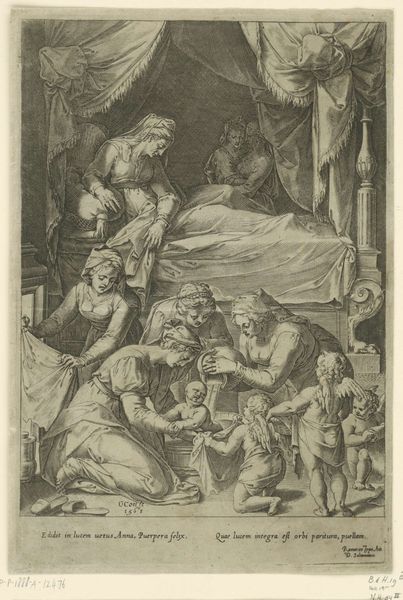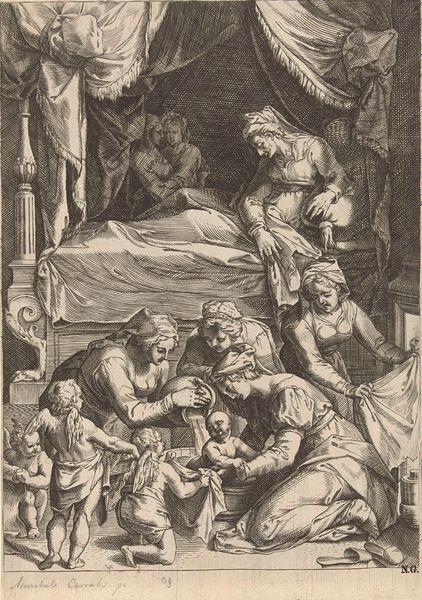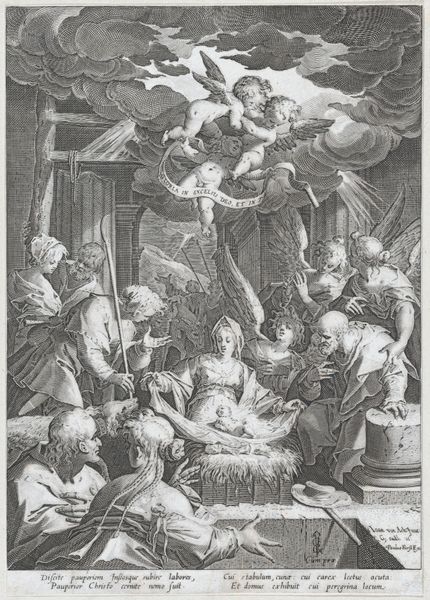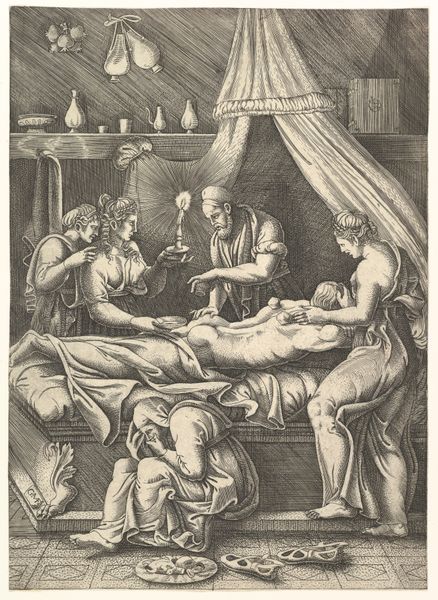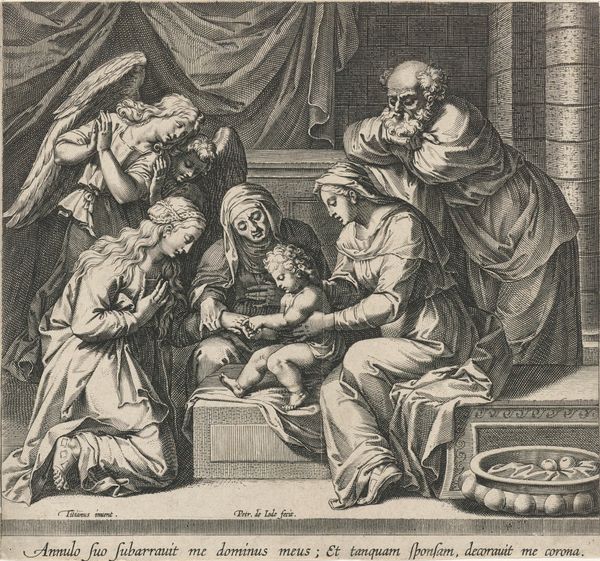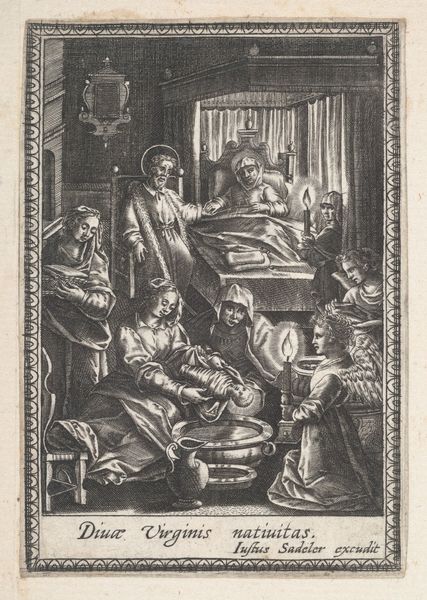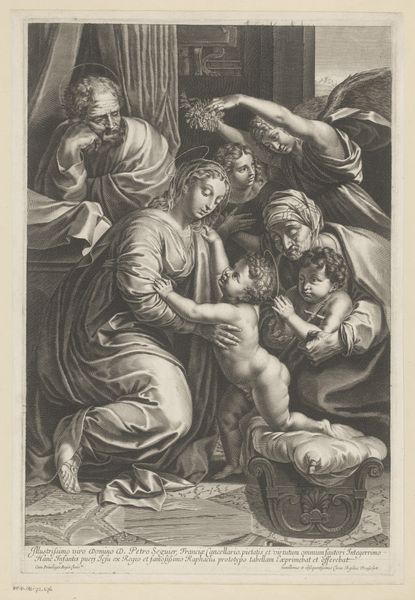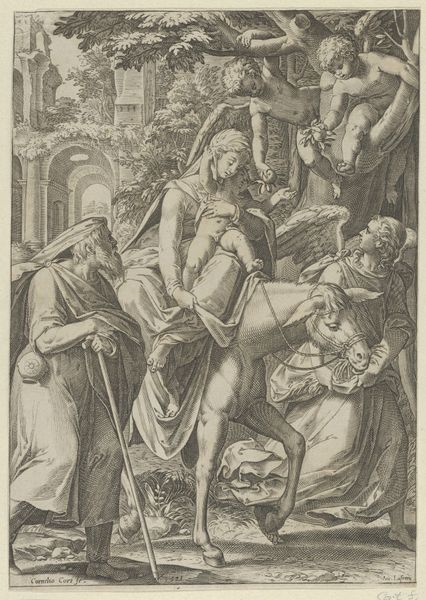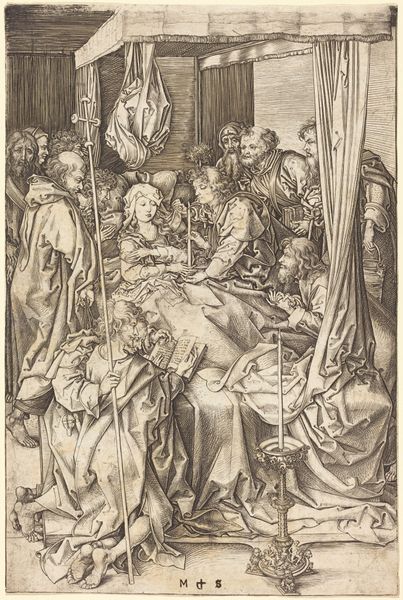
drawing, print, engraving
#
drawing
#
narrative-art
# print
#
figuration
#
11_renaissance
#
northern-renaissance
#
engraving
#
virgin-mary
#
angel
Dimensions: sheet: 10 13/16 x 7 15/16 in. (27.4 x 20.2 cm)
Copyright: Public Domain
This print, ‘Birth of the Virgin (copy)’ was made in the late 16th century by Julius Goltzius using the exacting process of engraving. Engraving is a skilled craft; the artist uses a tool called a burin to manually carve lines directly into a metal plate, usually copper. This requires immense control and precision. The plate is then inked, and the surface wiped clean, leaving ink only in the carved lines. When paper is pressed against the plate, the image transfers, resulting in the intricate design you see here. Look closely, and you'll notice the density of the lines, which create areas of light and shadow. The engraver’s labor-intensive process is evident in the detailed rendering of the scene, from the folds in the fabric to the delicate features of the figures. The act of copying itself raises interesting questions about originality and skill. In a time before photography, prints like these facilitated the circulation of images and ideas. By understanding the materials and making of this work, we can appreciate its cultural significance, and move beyond traditional notions of artistic genius.
Comments
No comments
Be the first to comment and join the conversation on the ultimate creative platform.
